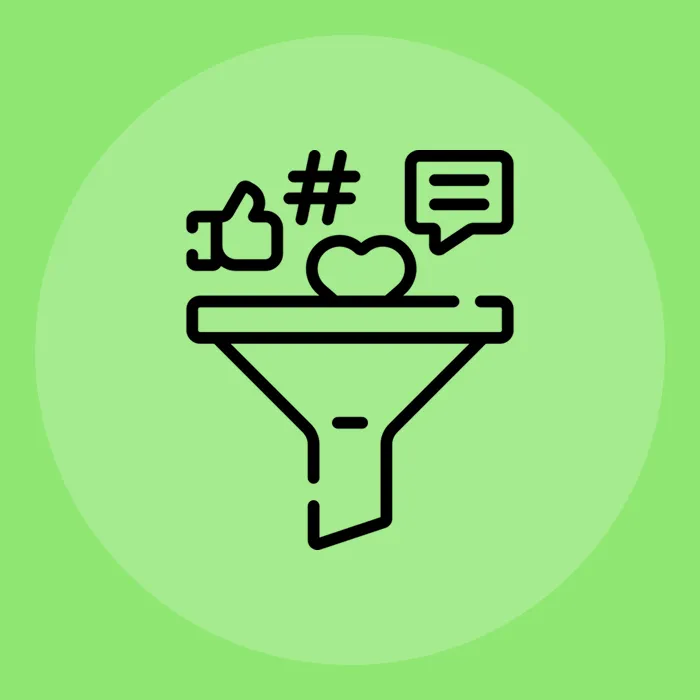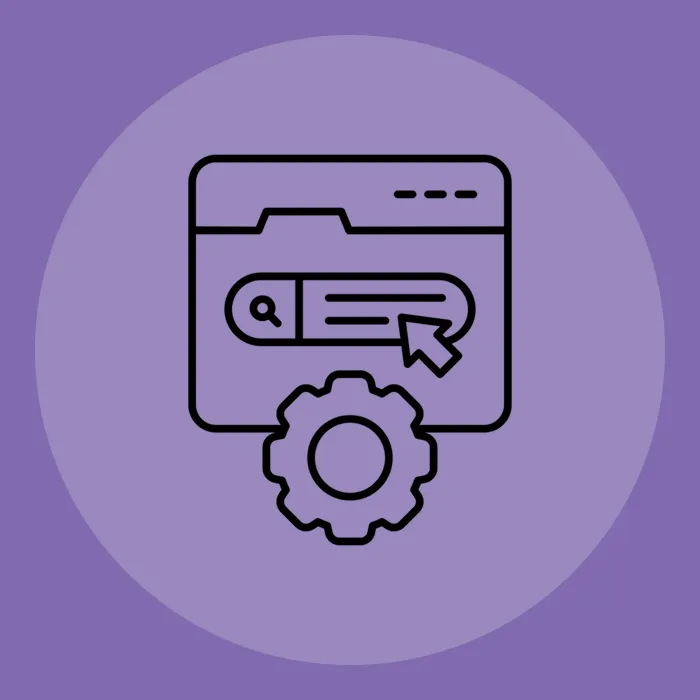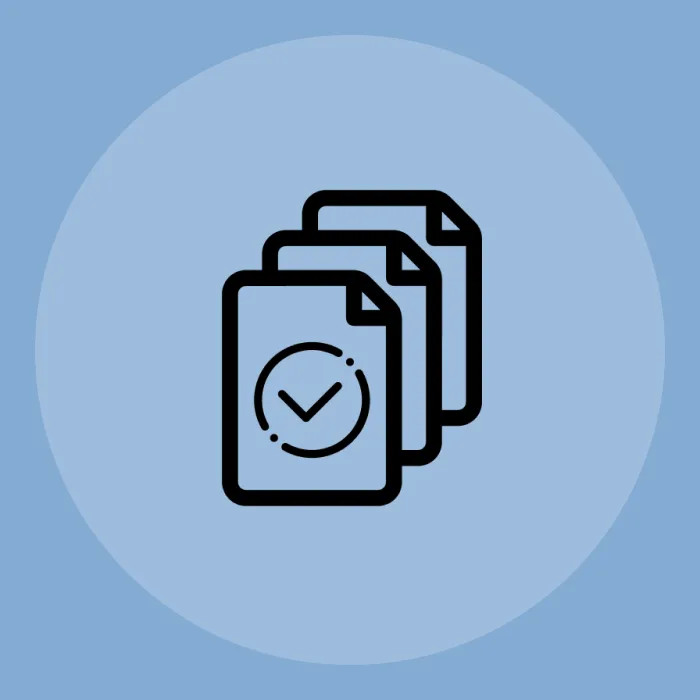A well-designed content marketing funnel is central to every successful Internet marketing strategy. When attention spans are short and competition is high, businesses must lead potential customers carefully through step-by-step processes from initial awareness to final conversion. Without a systematic funnel in position, even the most insightful and interesting content will be disjointed, unproductive, and ultimately forgotten.
Most old-school content marketing efforts fail because they lack a strategic funnel strategy. Content is generally made in a vacuum without knowing where a prospective customer stands within their process. That results in missed opportunities, wasted investment, and a confusing journey to gaining customers.
In this article, you'll find a step-by-step guide to building a strategic content marketing funnel. We'll look at each stage of the funnel, strategies for effective content mapping, optimizing with on-page SEO, and real-life examples to aid implementation. By the end of reading, you'll have a solid plan to build a funnel that drives results, nurtures loyalty, and supports long-term growth.
Understanding the New Content Marketing Funnel
Source: Freepik
Definition and Function of a Content Marketing Funnel
A content marketing funnel is a structured journey a potential buyer undertakes, from discovering a brand to purchasing. It guides planning content to the audience's evolving needs, questions, and problems at each point. The funnel ensures that content is intentional, targeted, and measurable rather than random or isolated.
The concept of building a content marketing funnel is to create a smooth and intentional user experience. Rather than pushing forceful sales from the outset, brands lead prospects through valuable and informative content, establishing trust and gradually driving action.
Difference Between Traditional Linear Funnels and Modern Multi-Touch Funnels
Traditionally, marketing funnels were seen as linear processes in which consumers moved sequentially from awareness to decision. But customer journeys now are far more complex. A modern multi-touch funnel reflects that users interact with brands across multiple channels and devices before deciding.
In a multi-touch funnel, customers can discover a brand by reading a post on social media, an article in a blog after a week, and a webinar after a month, and they convert only after experiencing an email campaign. All the touchpoints are essential, and the funnel should be able to measure multiple paths, nonlinear journeys, and individualized experiences.
Today's funnels focus on relationship building rather than hard selling. They require more segmentation, strategic retargeting, and an omnichannel vision for the customer experience on each platform.
Three Stages of Content Marketing Funnel
A good content marketing funnel is usually divided into three broad stages:
- Stage of Awareness: Prospects realize that they need or have a problem. The content at this stage must inform, encourage, and engage but not sell.
- Evaluation Stage: Prospects research actively for solutions. Content must assist them in evaluating options, contrasting solutions, and learning how your brand solves their problems.
- Conversion Stage: Customers are willing to make a decision. Content must be convincing, trust-inspiring, and action-provoking, leading them toward a decisive buy.
Knowing these stages allows marketers to deliver the right message at the right moment and hugely boosts the chances of conversion and customer satisfaction.
Foundational Setup: Setting up for Funnel Success
A successful content marketing funnel does not begin by producing content. It starts with detailed planning, investigation, and strategic goal-setting. A good foundation guarantees all content is built upon a definite purpose and audience expectation.
Deep Audience Research
How to Create Complete Buyer Personas
Creating rich buyer personas might be crucial to building a successful funnel. A buyer persona is a semi-fictional representation of your target customer based on actual data and market research.
To build a strong persona, marketers have to gather information such as
- Demographics: Age, gender, location, education level, income bracket
- Professional data: Job title, industry, level of seniority, responsibilities
- Goals and motivation: What are they trying to achieve personally or professionally?
- Challenges and pain points: What are the obstacles to them succeeding in their objectives?
- Buying behavior: How do they research products? What influences their decisions?
By adopting this comprehensive view, content creators can relate to users and create messages that resonate individually.
Tools and Methods for Researching Demographics, Psychographics, Behaviors
Source: Freepik
Effective audience research employs several tools and methods:
- Google Analytics: Analyze audience demographics, interests, and behavior flows.
- Survey Tools like SurveyMonkey: Obtain instant feedback from existing customers.
- Social Listening Platforms like Brandwatch: Monitor what is being said about topics of interest.
- CRM Data Analysis: Analyze trends in previous leads and buyers.
- Competitor Analysis Tools like SEMrush: Research competing audiences.
Combining the quantitative and qualitative research outcomes results in buyer personas richer than skin-level assumptions, providing a solid basis for funnel development.
Setting Clear Funnel Goals
Introduction to SMART Goal Setting
A content marketing funnel's success relies heavily on clear, actionable goals. Using the SMART model ensures that the objectives are
- Specific: Exactly outline what you want to achieve.
- Measurable: Quantify progress toward the goal
- Achievable: Create realistic goals considering resources
- Relevant: Align with overall business objectives
- Time-bound: Provide a time window for achieving outcomes
For example, rather than "increase blog traffic," an objective written as SMART would be "increase organic blog traffic 30 % over the next six months."
Assigning KPIs to Funnel Performance Tracking
Each section of the funnel requires its key performance indicators (KPIs) for tracking performance:
- Awareness Stage KPIs: Website traffic, social reach, impressions
- Evaluation Stage KPIs: Time on website, downloads, engagement
- Conversion Stage KPIs: Form submissions, purchase completions, revenue earned
Tracking these KPIs allows marketers to identify leaky areas of the funnel and optimize content accordingly. Tools like HubSpot Marketing Hub and Google Data Studio allow visualization and analysis of performance per funnel step.
Examples of Clear Content Marketing Goals
Source: Freepik
Clear content marketing goals guide content development and delivery of meaningful content. Some examples include
- Drive 1000 new leads from gated content offers in the next quarter
- Achieve a 5% email click-through rate in nurture sequences within three months.
- Improve registration on webinars by 20% in the following series of events.
Setting these concrete goals guarantees that every piece of content in a funnel aligns directly with larger marketing and business objectives.
Content Mapping: Aligning Content to Funnel Stages
A productive content marketing funnel is constructed based on mapping the correct content type to every step of the buying journey. Matching content formats with prospect needs and mindset at each stage ensures that users can locate the value they seek and proceed naturally to conversion.
Top of the Funnel (Awareness)
Prospects at the awareness stage are acquiring knowledge about a problem or exploring a new passion. They are not ready to consume sales-driven content yet, so the focus should be on learning, brand exploration, and value creation without urgency.
Content Forms for Awareness
- Blog posts that offer solutions to common issues
- Infographics explaining complex information
- Social media posts that motivate, entertain, or inform
- E-books and guides for free exploring broader topics
These types of content are focused on grabbing, answering, and making your brand a go-to source.
Put Brand Introduction and Education First
Content should provide actionable tips without directly selling merchandise. The goal is to gain the reader's trust and credibility. For example, a company selling project management software would compose a series of blogs entitled "Top Time Management Challenges and How to Overcome Them" rather than immediately selling its platform.
Examples of Successful TOFU Strategies
- HubSpot's blog contains thousands of helpful articles on marketing, sales, and service and is thus one of the sources learners will go to for information at the awareness stage.
- Moz's Beginner's Guide to SEO is a timeless resource that attracts beginners starting with search engine optimization.
These instances show how delivering value initially lays the groundwork for future engagement.
Middle of the Funnel (Evaluation)
At the assessment stage, potential customers are seeking solutions. They're evaluating brands, examining product features, and seeking assurance that a supplier can deliver what they desire. Content is now required to build trust and respond to accurate questions.
Types of Content at the Evaluation Stage
- Webinars featuring industry influencers
- Case studies of successful customer success stories
- Templates, checklists, or worksheets for fixing immediate problems
- Detailed comparison documents and expert papers
Middle-of-funnel content needs to enable prospects to see how their issues can be solved using the right solution.
Establishing Trust and Solving Concrete User Issues
The content here must tackle universal objections, feature proof points, and provide doors of engagement without outrightly pursuing a sale. It should position your brand as the top choice by illustrating expertise and actual results.
Examples of Strong MOFU Assets
- Crazy Egg's webinars offer live website optimization reviews, establishing credibility and showcasing expertise.
- Trello's library of templates provides valuable resources that guide users to start using project management and indirectly introduce the platform's possibilities.
Bottom of the Funnel (Conversion)
Prospects in the conversion phase are willing to make a decision. Content at this phase must remove any last-minute objections, reduce perceived risk, and reaffirm value promises.
Content Formats for Conversion
- Personalized product demonstrations
- Testimonials and success stories from customers
- Free audits or consultations
- Limited-time special offers or promotions
Conversion-driven content must make the final purchasing steps easy, reassuring, and compelling.
Focusing on Value, Risk Mitigation, and Decision Guidance
Simple comparisons, FAQ responses, money-back offers, and client testimonials can tip the scales. The goal is to instill confidence and dissipate reluctance.
Real-World Examples of BOFU Tactics
- ClickUp demo requests allow users to try the platform with a customized walkthrough, solving specific needs.
- Shopify customer stories include real-world success stories, creating emotional resonance and trust in their service.
Fueling the Funnel with On-Page SEO and Optimization
Source: Freepik
A properly constructed funnel isn't complete without solid on-page SEO practices. Optimizing all content ensures visibility, accessibility, and performance in search engines.
Keyword Research Designed for Each Funnel Step
Each funnel step needs different keyword strategies.
- Awareness Stage: Utilize informational keywords like "how to enhance time management."
- Evaluation Stage: Utilize comparison and solution keywords like "top project management software."
- Conversion Stage: Utilize transactional keywords like "purchase project management tool" or "book software demo."
Tools like SEMrush or Ahrefs can expose perfect keyword opportunities for each step.
On-Page SEO Fundamentals
- Formulate compelling titles with main keywords first
- Write meta descriptions that adequately summarize the benefits of content.
- Employ a logical, clear header hierarchy (H1, H2, H3) to guide readers
- Apply schema markup where applicable for increased visibility.
- Solid SEO foundations propel content to rank higher, reach the right audience, and maintain engagement.
Internal Linking Best Practices for Funnel Progression
Intelligent internal linking keeps users naturally moving through the funnel:
- Awareness content ought to link to evaluation resources
- Evaluation content ought to link to conversion offers.
- Using proper anchor text and reasonable linking places
- Proper internal linking boosts SEO value and stimulates deeper site exploration.
Measuring and Optimizing Funnel Performance
Ongoing optimization enables an effective content marketing funnel.
Important Metrics at Each Funnel Stage
- Awareness Phase: Page views, social shares, reach
- Evaluation Phase: Engagement time, lead generation, bounce rate
- Conversion Phase: Conversion rate, sales volume, revenue
Watching these metrics gives one a glimpse into areas of strength, weakness, and opportunity for expansion.
Tools of Choice for Funnel Analysis
Google Analytics, Hotjar, and Crazy Egg present thorough insights into user behavior, funnel performance, and content performance. Heatmaps, session recordings, and conversion tracking are convenient tools for optimizing experiences.
Conclusion
A well-planned content marketing funnel is the essence of success in the digital age. It converts random content generation into a methodical process that builds connections, drives income, and encourages loyalty. By intimately understanding your audience, precisely mapping content, optimizing for on-page search engine optimization, strategically promoting, and constantly measuring results, you can develop a funnel that gains and holds onto customers over the long term. Remember, building a high-performing funnel is a dynamic process. Continuous learning, testing, and iteration will align your marketing processes with changing consumer behavior and new technology developments. The victors are those brands that listen, adapt, and deliver exceptional value at every turn of the journey.
Author Bio
Joshua Turner is an experienced content marketer and outreach specialist with a strong background in SEO and digital marketing. Passionate about helping businesses grow, he focuses on driving organic traffic and acquiring high-quality backlinks. Joshua has collaborated with a wide range of industries, particularly SaaS, providing tailored content strategies and effective outreach solutions.










